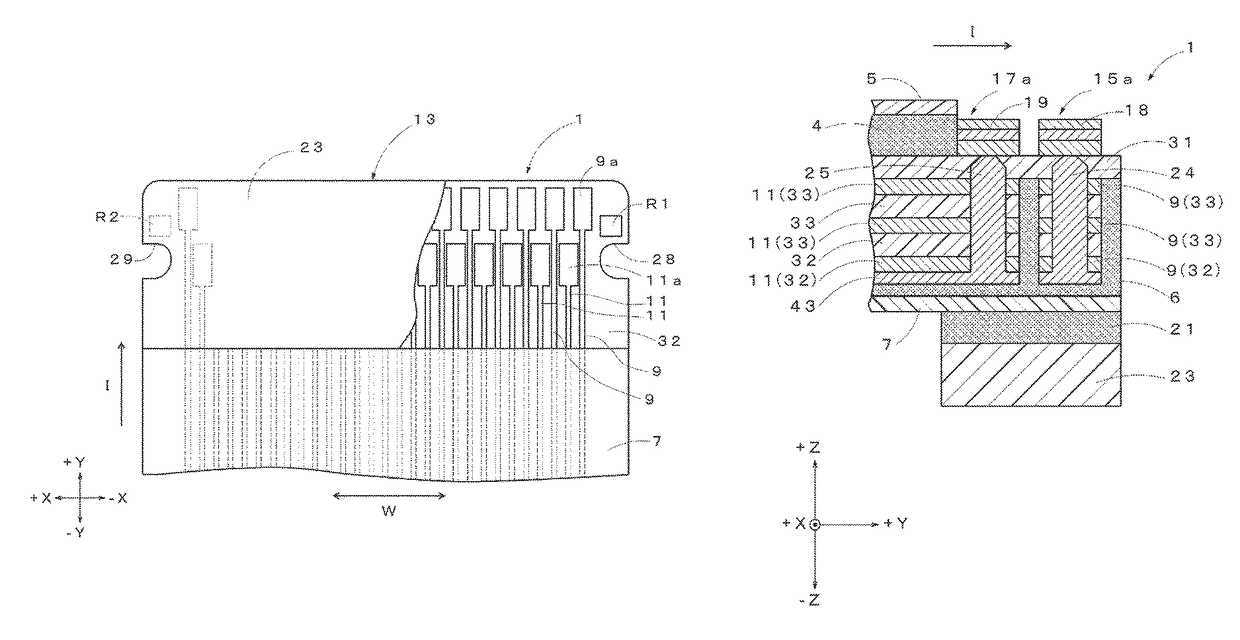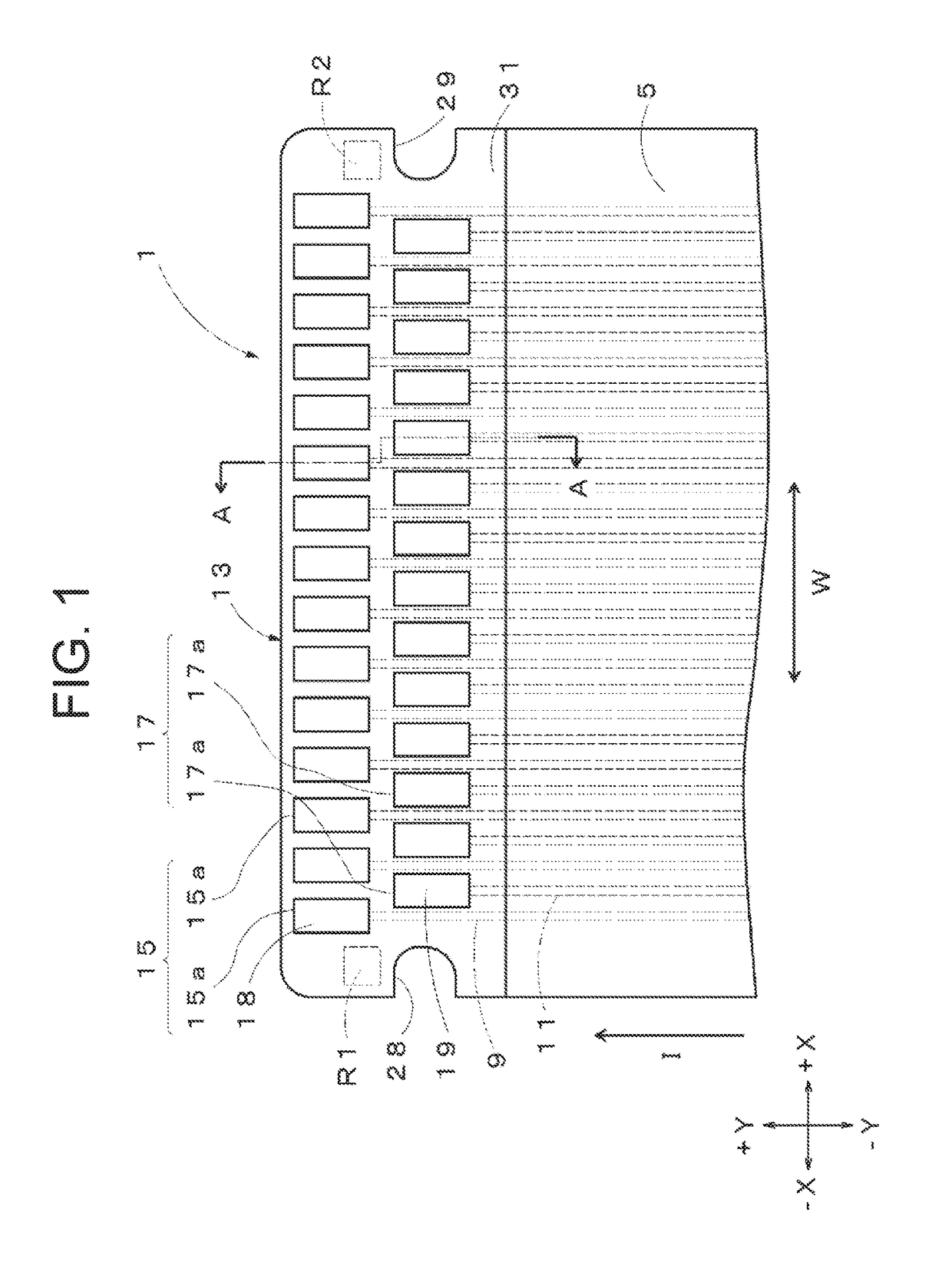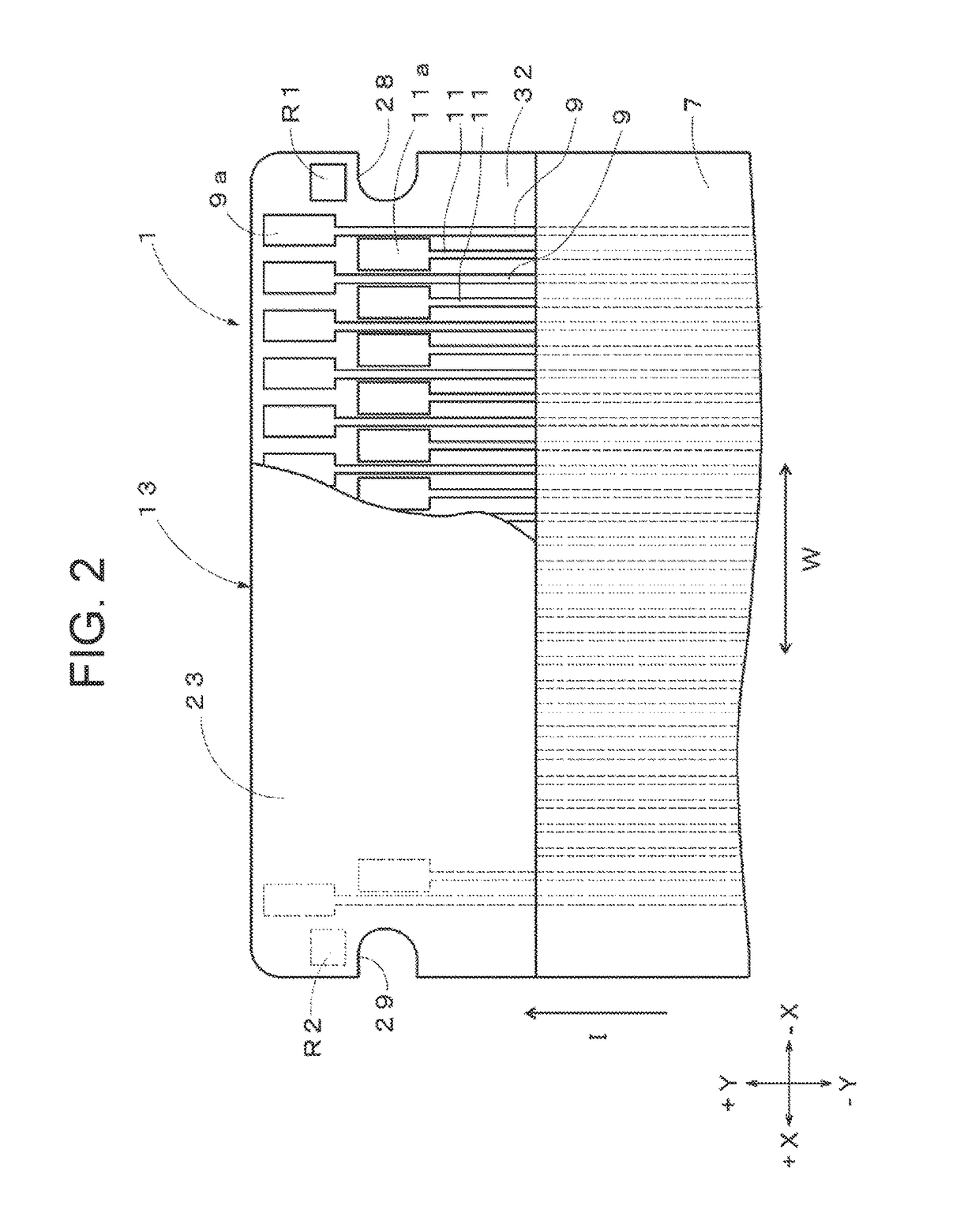Printed wiring board
a printed wiring board and connector technology, applied in the direction of printed circuit structure associations, printed circuit aspects, coupling device connections, etc., can solve the problems and affecting the service life of printed wiring boards. , to achieve the effect of reducing the thickness and size of printed wiring boards and enhancing the engagement for
- Summary
- Abstract
- Description
- Claims
- Application Information
AI Technical Summary
Benefits of technology
Problems solved by technology
Method used
Image
Examples
example 1
[0155]As Example 1, a printed wiring board 1 of a multilayer structure having the structure illustrated in FIGS. 1 to 4 was produced. The first substrate 31, second substrate 32, and third substrate 33 were produced through a scheme using a photolithography technique for the first wirings 9, second wirings 11, pads 15 and 17, and reinforcement layers R1 and R2.
[0156]Double-sided copper clad laminates were used as the first substrate 31, second substrate 32, and third substrate 33. Each double-sided copper clad laminate has a polyimide film of a thickness of 20 [μm] and copper foil layers formed on the polyimide film. The arrangement of the pads 15 and 17 is as illustrated in FIG. 1. Pitch of the pads 15 and 17 was 0.175 [mm] (0.35 [mm] in each array). The material of the pads 15 and 17, first wirings 9, second wirings 11, and reinforcement layers R1 and R2 was copper. The reinforcement layers R1 and R2 had a width of 0.5 [mm], length of 0.5 [mm], and thickness of 22.5 [μm] (copper: ...
example 2
[0163]As Example 2, the printed wiring board 1 was produced as in Example 1 except that the reinforcement layers R1 and R2 were formed integrally with some of the first wirings 9 and second wirings 11.
example 3
[0164]As Example 3, the printed wiring board 1 was produced as in Example 1 except that the reinforcement layers R1 and R2 were formed on the one main surface of the first substrate 31 and formed separately from the pads 15 and 17.
PUM
 Login to View More
Login to View More Abstract
Description
Claims
Application Information
 Login to View More
Login to View More - R&D
- Intellectual Property
- Life Sciences
- Materials
- Tech Scout
- Unparalleled Data Quality
- Higher Quality Content
- 60% Fewer Hallucinations
Browse by: Latest US Patents, China's latest patents, Technical Efficacy Thesaurus, Application Domain, Technology Topic, Popular Technical Reports.
© 2025 PatSnap. All rights reserved.Legal|Privacy policy|Modern Slavery Act Transparency Statement|Sitemap|About US| Contact US: help@patsnap.com



